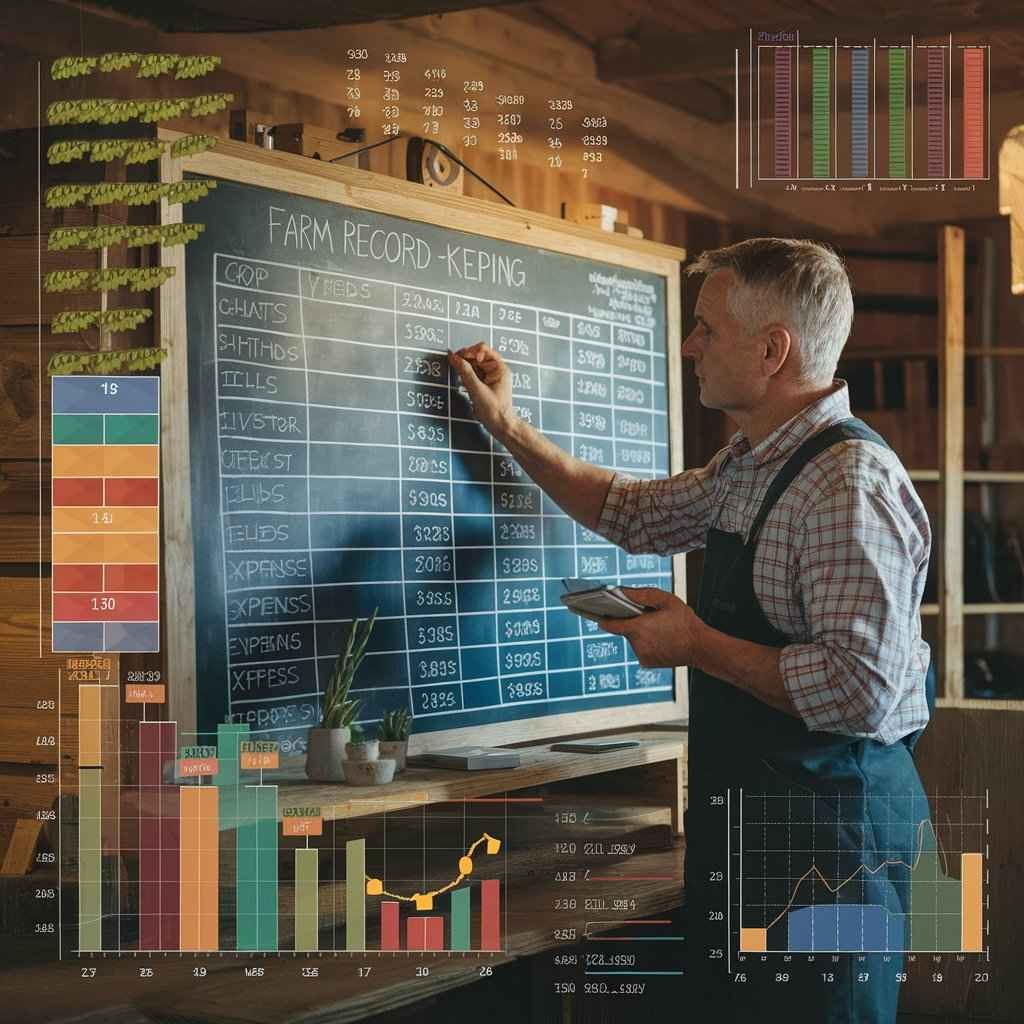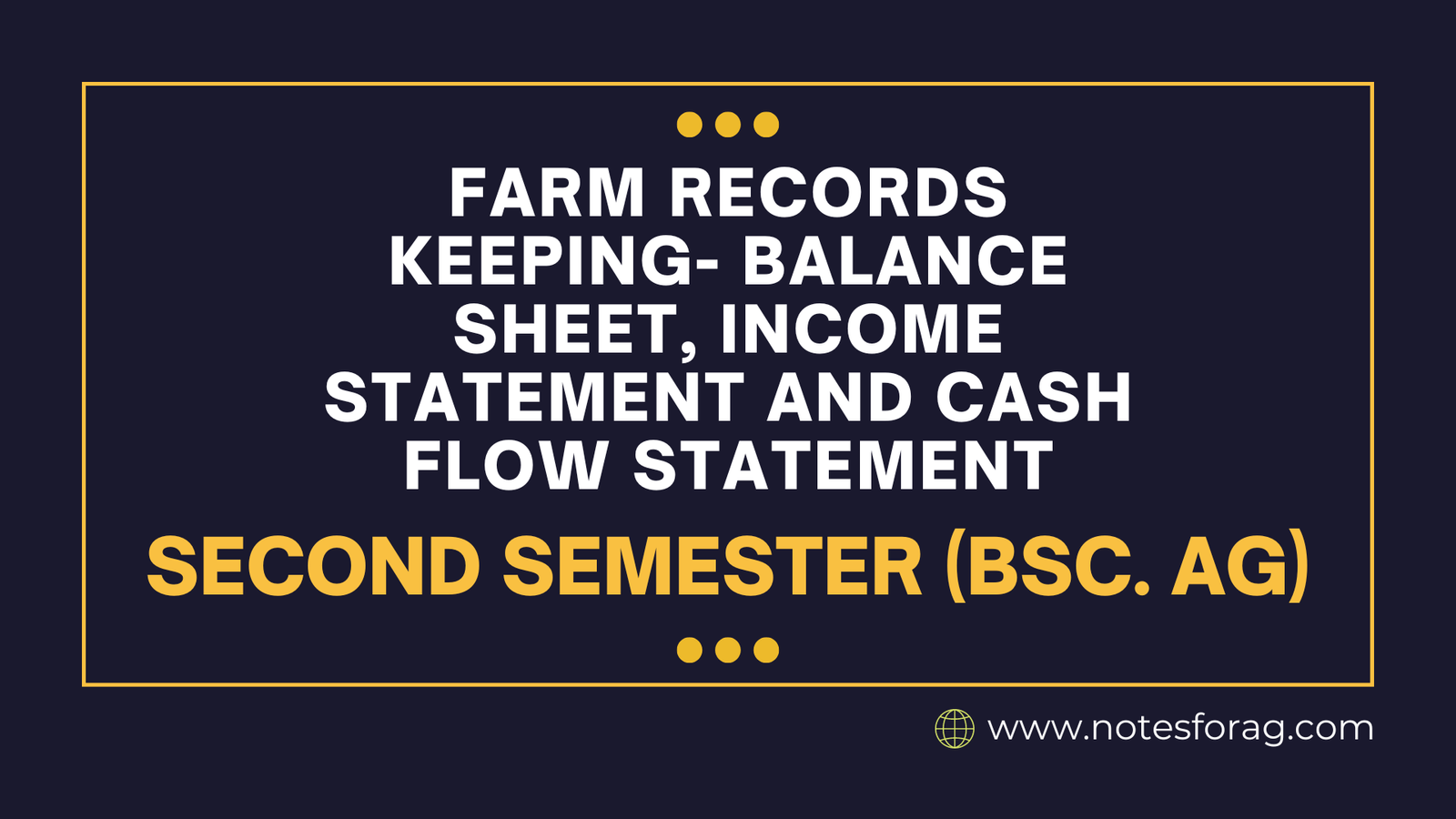Effective farm records keeping involves maintaining thorough financial records, including the balance sheet, income statement, and cash flow statement. The farm’s assets, liabilities, and equity are shown in the balance sheet, which offers a moment in time view of the farm’s financial situation. The income statement, also known as the profit and loss statement, summarizes revenues and expenses to show net income and displays the farm’s financial performance over time. The farm’s liquidity and cash management are highlighted by the cash flow statement, which shows the cash inflows and outflows from operating, investing, and financing activities. When taken as a whole, these statements provide a comprehensive assessment of the farm’s financial situation, facilitating financial planning, informed decision-making, and regulatory compliance.
Table of Contents
Introduction to Farm Records Keeping
Keeping thorough and accurate farm records keeping is a crucial component of efficient farm management. Keeping meticulous records of all financial dealings and day-to-day operations related to farm management is called farm records keeping. Maintaining financial performance, supporting grant and loan applications, assisting in decision-making, and guaranteeing tax compliance all depend on this practice. Farmers can discover areas for improvement, obtain insights into the profitability of their farm, and make well-informed decisions that support the sustainability of their operations by maintaining thorough records.
Farm records keeping is beneficial for tracking financial performance, which is one of its main advantages. Precise documentation enables farmers to oversee earnings and outlays, appraise profitability, and appraise the fiscal well-being of their farm. Making educated decisions regarding resource allocation, livestock management, and crop selection requires this information. Furthermore, farmers can anticipate future financial needs and opportunities by using well-maintained records to identify trends and patterns.

Farm records are necessary for tax compliance in addition to financial tracking. Farmers must accurately report to tax authorities their income and expenses. Maintaining thorough records facilitates tax return preparation, deduction claims, and compliance with legal requirements.
The primary financial statements are the balance sheet, income statement, and cash flow statement. Here’s an overview of each:
Balance Sheet
An essential financial document that shows a farm’s financial situation at a particular moment in time is the balance sheet. Farmers can make well-informed decisions about their operations and long-term strategy by having a thorough understanding of these components. It includes three main components:
1. Assets:
- Current Assets: Cash, accounts receivable, inventory (crops, livestock, supplies).
- Non-Current Assets: Land, buildings, machinery, equipment, breeding livestock.
2. Liabilities:
- Current Liabilities: Accounts payable, short-term loans, accrued expenses.
- Non-Current Liabilities: Long-term loans, mortgages, leases.
3. Equity:
Owner’s equity or net worth, which is the residual interest in the assets of the farm after deducting liabilities.
Formula:
Assets = Liabilities+Equity
By maintaining an accurate and up-to-date balance sheet, farmers can better navigate the complexities of their financial landscape, ensuring sustainable and profitable farm operations.
Income Statement
The income statement, which shows the farm’s revenue, costs, and net income over a given time period, is a crucial financial document for maintaining farm records. Its main goal is to present an accurate picture of the farm’s profitability and productivity. Comprehending the income statement enables farmers to make well-informed decisions, enhance operational efficiency, and strategize for the future. It includes:
1. Revenues:
- Sales of crops, livestock, dairy products, and other farm outputs.
- Government payments, insurance claims, and other income sources.
2. Expenses:
- Operating expenses: Seeds, feed, fertilizer, labor, utilities.
- Depreciation: Allocation of the cost of tangible assets over their useful lives.
- Interest expenses on loans and mortgages.
3. Net Income:
- The difference between total revenues and total expenses, indicating the farm’s profitability.
Formula:
Net Income = Total Revenues−Total Expenses
Understanding the income statement is vital for making informed business decisions. By regularly analyzing this document, farmers can identify trends, manage costs, and maximize revenue, ultimately ensuring the long-term sustainability and growth of their farming operations.
Cash Flow Statement
A cash flow statement gives a thorough account of how money is made and spent over a given time period, making it an essential tool for managing a farm’s finances. The operating, investing, and financing activities make up the three main sections of this financial document. The cash flow statement outlines the cash inflows and outflows over a specific period, divided into three sections:
1. Operating Activities:
- Cash generated from core farming operations (sales of produce, livestock, etc.).
- Cash payments for inputs like seeds, feed, wages, and utilities.
2. Investing Activities:
- Cash used to buy or sell long-term assets such as land, equipment, and buildings.
3. Financing Activities:
- Cash flows related to borrowing and repaying loans, issuing equity, or paying dividends
Formula:
Net Cash Flow = Cash Inflows−Cash Outflows
Maintaining a positive cash flow is essential for the sustainability and growth of the farm. A well-managed cash flow statement not only helps in day-to-day decision-making but also provides a clear picture of the farm’s financial stability and potential for future investments.
Integration and Use
A thorough understanding of the farm’s financial situation is offered by the interconnectedness of these financial statements:
- Balance Sheet: Provides an instantaneous view of one’s financial situation.
- Income Statement: Offers perspective on profitability throughout the years.
- Cash Flow Statement: Displays the farm’s cash flow and liquidity.
Importance of Keeping Accurate Records
- Decision-Making: Facilitates the process of making well-informed tactical and strategic choices.
- Financial Management: Makes financial planning, forecasting, and budgeting easier.
- Access to credit: necessary to obtain financing and loans from banks.
- Compliance: Guarantees that tax laws and other legal requirements are followed.
- Performance Monitoring: Keeps tabs on the farm’s financial results and pinpoints areas in need of development.
Farm records keeping involves maintaining detailed and accurate financial documents, such as the balance sheet, income statement, and cash flow statement, to track the farm’s financial health and performance. Effective farm records keeping aids in informed decision-making, financial planning, tax compliance, and securing financing, ensuring the farm’s long-term sustainability and profitability.
Frequently Asked Question(FAQ)
What is the purpose of keeping farm records?
Maintaining farm records is beneficial for monitoring the farm’s health and financial performance, helping with decision-making, guaranteeing tax compliance, and obtaining funding.
What are the benefits of maintaining comprehensive farm records?
To ensure long-term sustainability and profitability, keeping thorough farm records is helpful for financial planning, performance monitoring, tax compliance, obtaining financing, and making wise management decisions.
Related Articles

